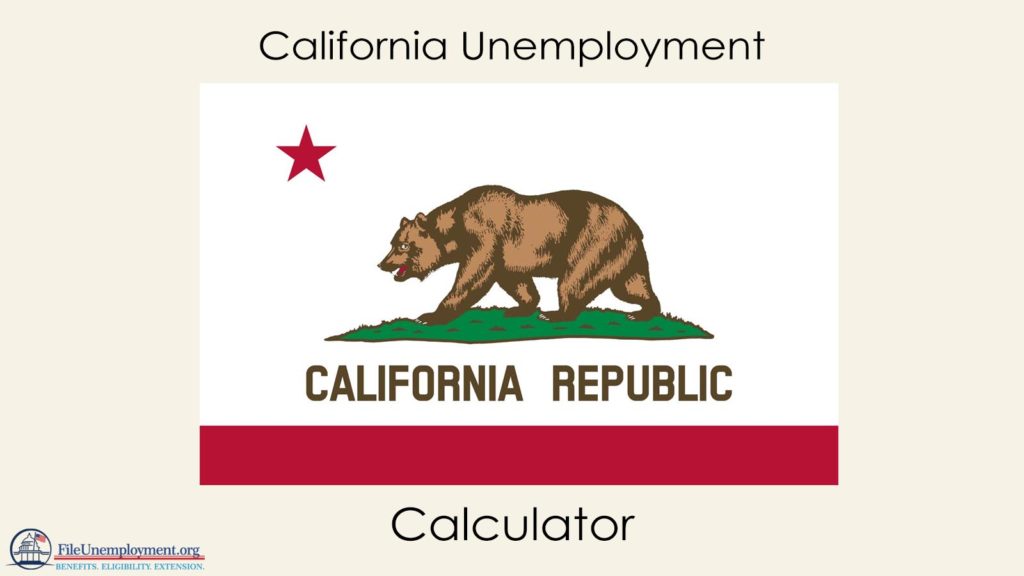
If you are unemployed through no fault of your own, you may be eligible for California Unemployment Insurance benefits. To apply for UI benefits, you will need to meet certain monetary eligibility criteria. The Employment Development Department (EDD) will check if you earned enough money during a four-quarter base period. The amount of money you can receive in weekly benefits is calculated based on the wages you earned during the base period of your claim.
California Unemployment Benefits Calculator
For example:
- If you make $500 per week in California, your estimated weekly benefit is $450 for up to 26 weeks.
- If you make $800 per week in California, your estimated weekly benefit is $450 for up to 26 weeks.
- If you make $1000 per week in California, your estimated weekly benefit is $450 for up to 26 weeks.
- If you make $1500 per week in California, your estimated weekly benefit is $450 for up to 26 weeks.
- If you make $2000 per week in California, your estimated weekly benefit is $450 for up to 26 weeks.
How are California unemployment benefits calculated?
In California, the maximum weekly benefit you can receive is $450. The lowest you can receive is $50. Unemployment benefits last up to 26 weeks. There are no extended benefits available except during times of economic hardship when California’s unemployment rate is very high. In the event of a natural disaster, benefits can also be offered via the Disaster Unemployment Assistance program. Programs offered during the COVID pandemic, such as Pandemic Unemployment Assistance (PUA), are all expired. Currently, claimants can only receive benefits for a maximum of 26 weeks.
If you haven’t been employed or earned wages in the past 18 months, then your expected weekly benefit amount will be $0. This is because you did not accumulate enough wages during your base period to meet the requirements for receiving an unemployment benefit.
To establish a valid claim, you must have earned at least:
- $1,300 in the highest quarter of your Base Period
- $900 in your highest quarter and total base period earnings of 1.25 times your high quarter earnings
Unemployment Insurance Benefit Table
The EDD uses a wage chart to calculate the weekly benefit amount (WBA). Your wages in the highest quarter of your base period are used to determine your benefit amount.
For example, if you earned $2,522.00, your weekly benefit amount would be $97.
If you earned 3,796.00, your WBA would be $146.
If you earned $11,674.01 or more, your unemployment compensation would be $450 per week, which is the maximum anyone can collect.
Part Time Work
You can collect partial UI benefits if you work part time. Your earnings are deducted from your weekly benefit amount. So if your unemployment compensation is $350 per week, and you earn $150 doing part time work, your weekly benefit amount is $200 for that week. To avoid accusations of California unemployment fraud, always report accurate earnings when you file your biweekly claim. If you receive a payment that you feel is incorrect, you can file an appeal.
What is a base period?
To calculate your UI benefit, EDD examines your 12-month base period. Each base period has four quarters of three months each. Two types of base periods may be used to establish your unemployment claim.
Standard Base Period
The Standard Base Period used to determine California unemployment eligibility is typically the first four of the five most recently completed calendar quarters before the starting date of your UI claim.
Alternate Base Period
If you don’t earn enough wages in the Standard Base Period to establish a claim, the EDD will check if you have enough wages to file a claim using the Alternate Base Period. The Alternate Base Period can only be used when you don’t earn enough wages in the Standard Base Period to file a valid UI claim, but you have enough wages in the Alternate Base Period.
The Alternate Base Period is the last four completed calendar quarters before the start of your claim. You can only file an Alternate Base Period claim when you don’t have enough wages earned in the Standard Base Period to file a valid claim, and you meet all other eligibility criteria to qualify for UI benefits.
Collecting your payment
You can receive your payment via debit card or paper check, though paper checks are discouraged. The Bank of America debit card website also allows you to set up direct deposit to your bank account.
It typically takes about a week to receive your first payment, but it may take a few extra days to get your EDD Debit Card in the mail. Using a debit card reduces the risk of paper checks getting lost or stolen. You also save time by avoiding extra trips to the bank.
Direct Deposit
To set up a direct deposit transfer from your debit card to your bank account, you can visit the Bank of America EDD Debit Card website. You can also download the Bank of America Prepaid Card app from any app store to monitor your EDD Debit Card payments and balance information.
Do I have to pay taxes on my unemployment compensation?
Yes, unemployment compensation is considered income and you have to pay federal taxes – though you don’t have to pay California state tax.
If you have received unemployment compensation, you have two options for paying federal income tax on it:
- Choose to have taxes withheld from your unemployment compensation by filling out Form W-4V, the Voluntary Withholding Request and Tax Withholding form.
- Make quarterly estimated tax payments, which may be required in some cases.
Reporting Unemployment Compensation
You should expect to receive a Form 1099-G, Certain Government Payments, which will indicate the total amount of unemployment compensation paid to you in Box 1 and any federal income tax withheld in Box 4 for the year.




